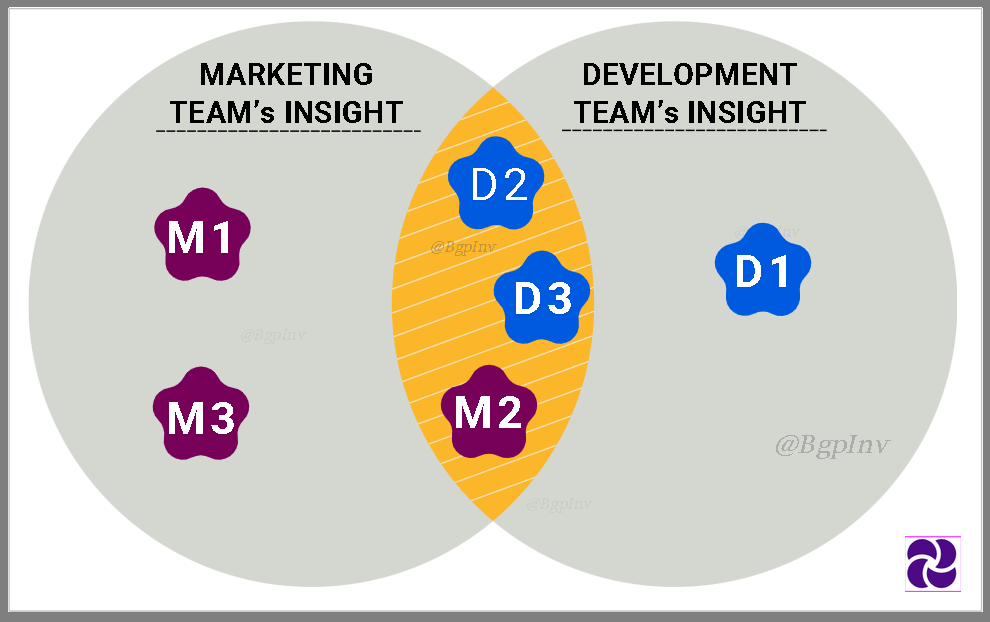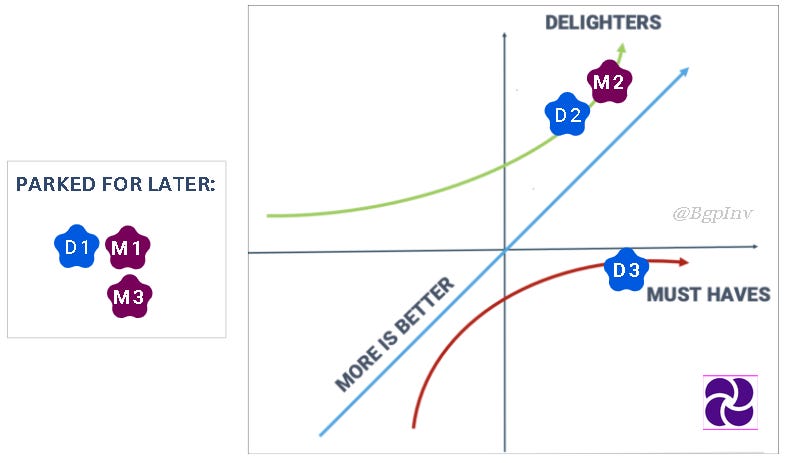Herzberg’s Theory – a 2025 Perspective!
What do the terms “motivation” & “hygiene” essentially mean as for today’s orgs & teams, in 2025s + beyond…
As I am seeing that visual bearing that quote & having to read through it, there’s a wave of denial passing through me. Really? How can it not be about the outcome? After all I ought to be the flagbearer of objectivity both for myself & all the teams, stakeholders in question.
Well, that’s the importance of context, as always.
There are teams in the world that are operating without a proper product manager role, or even if the situation isn’t all that worse there are people who play the role of a makeshift product manager when they are going by the title program manager / head of innovation / head of technology.
Although the outcome is paramount for us product people, the journey could be just as important & can’t be ignored at all.
And, here is why…
Consider that all-important meeting with a future B2C / B2B prospect for an exploratory discussion with someone who could turn out to be a future partner, the most preferred spot happens to be a Café, a casual / cool semi-formal setting, more so if one doesn’t have a gadget-friendly conference room bearing glass walls right up to the ceiling at a plush office at one of the main corners of a bustling downtown.
Apart from serving a multitude of purposes it also serves one important & crucial aspect, that’s striking a first impression also fueled by the thought process that the first impression happens to be the last. By calling the prospect to a meeting at an elite café in an up-market community, people believe that they are setting an expectation straight, of course & obviously for the customer / client-to-be, but for oneself & one’s team members as well.
Yes, there’s obviously something about the money that gets spent on offices & the related infrastructure, which also justifies the expenditure (& also the projected figures as for the next decade) earmarked by orgs. on home office furniture in the recent past, driven mostly by Covid, WFH.
When that expenditure is one significant part alright, the other happens to be the environment, culture, teams, camaraderie & the way they happen to be organized overall.
Yes, no doubt. There are these external factors like:
healthy environment
ergonomics
people friendly policies
which do matter… & there could also be a lot riding on:
the perspectives &
how those individual contributions vide
the ideas /
the opinions /
the thoughts
get heard, honored, discussed & get factored in…
“Herzberg’s theory (1959) suggests that organizations enhance individual & team performances by addressing factors that relate to motivational & hygiene, which could include job security, org. policies, positive team environment & growth”
Given a high performing product team, could it be safe to say that it's all down to those individual perspectives & the way they get handled…?
Product teams are obviously a conglomeration of many teams that basically include but aren’t limited to development / technology, design, marketing, sales, support. And one can’t really perceive the org. as complete without all of these teams in place. Also given the case of start-ups it could be taken for granted that each of those members are pretty experienced, possessing acute knowledge of the craft & all those idiosyncrasies. They also could be considered pioneers in terms of tackling whatever hurdle / blocker that they seem to encounter, major or minor.
But if someone is an expert possessing mastery over one domain / sub-domain / subject matter / craft, it most probably improves the likelihood of them being a great contributor individually, but it most certainly will not make them a great collaborator. And unless one is collaborating well, the chances for the team’s overall success could be dwindling & on a downward spiral.
Let’s hypothesize.
Over one of the scenarios in a team:
A marketing guy may look at product from the perspective of promotion, positioning & for what it's worth, that may just be perfect the way it is
A developer could perceive it as getting one of the features built & that could also be perfect in its own way
A designer could be under the impression that the approach taken to solve the problem in question just beats all else, hands down
Needless to say, they all ought to be in harmony with each other so as to even take the first step toward s collaborating harmoniously. Yes, I know all you AGILISTS are screaming “SHARED UNDERSTANDING” but I am referring to the process that gets everyone on one single page bringing them to that stage of understanding.
What does one have to do towards building that shared understanding in the first place?
Think of it like 4 wheels of an automobile. The wheels have to be in motion alright. But they also ought to be in perfect harmony complementing each other over their individual strengths & weaknesses.
When hiring [the BEST] happens to be the mantra of every leader / entrepreneur, one ought to also remember how too many cooks could also spoil the broth. If every member hired in a team is at an equal pedestal of experience, there could be ensuing chaos given how they could lack direction with no clear leader amongst the pack.
So, a marketing guy would approach the problem differently & put forth views that bat for the inclusion of some (x) feature / initiative towards an outcome & so would the developer given how they may have had the experience of witnessing / using some other tool in the market.
Let’s say the marketing guy contributes his findings which translates into 3 features:
Marketing Team’s Insight = M(x) = { M1, M2, M3 }
And assume the developer put forth their views as to what they think would be the feature(s) that the org. ought to concentrate on next:
Development Team’s Insight = D(x) = { D1, D2, D3 }
But in reality, the 2 lists above may not look as disjoint as depicted here. Making it look more realistic we may have something like:
M(x) = {M1, D2, M2, M3, D3}
D(x) = {D1, D2, M2, D3}
NOTE: Just because certain requests (in this case D2, M2, D3) appear under 2 different lists doesn’t mean it ought to be carried ahead blindly without any reconsideration.
The KaNo canvas ought to work pretty well in this case.
I suggest using the KaNo model here to place these features-to-be & then trigger some regressive brainstorming to reach the most probable ones could work well.
And, here are a few questions one ought to mandatorily pop during that brainstorming session:
What’s the main motive / rationale behind this feature suggested?
Why does it make sense to build this (x) from both the user’s & the org.’s perspective?
What would happen if we don’t build this right now?
What would change majorly once this gets built?
It could be a great idea to send this questionnaire to each and every stakeholder / participant as a pre-read so as to give them enough room to drilldown, play the devil’s advocate if need be & prepare themselves towards standing up for what they believe in, the whole rationale behind their thought process & gear up for any sort cross-questioning thereof.
In conclusion:
There’s nothing more satisfying as of today than learning of how your contributions are honored, factored in & accepted into the team’s fold. As a leader / entrepreneur, if you’re thinking about the hygiene of all your teams & want to keep them motivated towards delivering their best all the time, you’d better get your head down & focus on facilitating absolutely everything needed to evoke the best camaraderie amongst the team members.
“Focus on building an environment where perspectives are honored & help teams / team members feel belonged”










